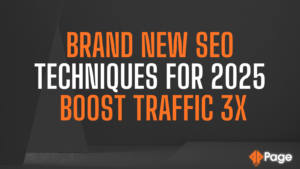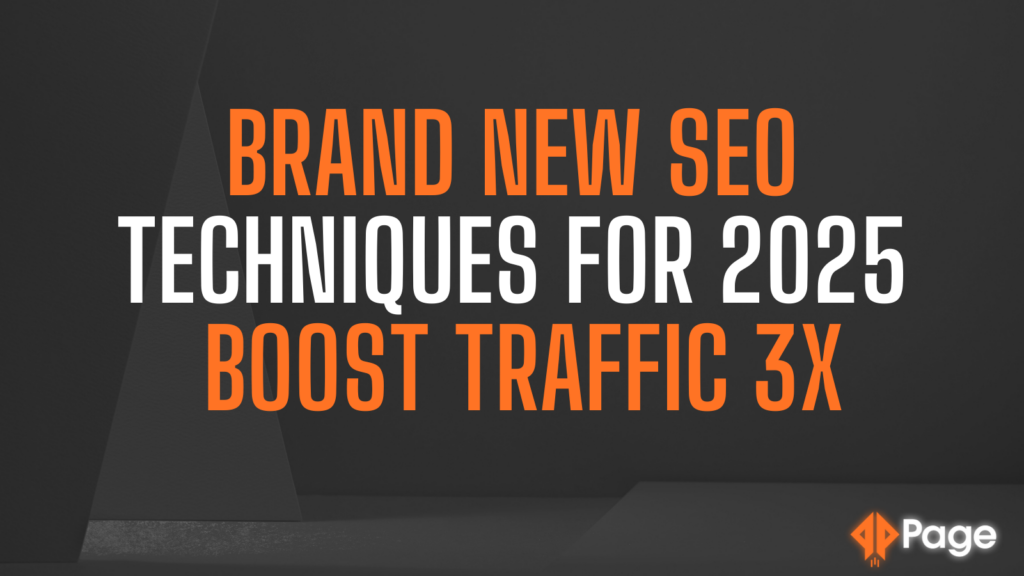2025 is near now in the upcoming few months Google will announce new Core Updates but this year they give signals about what`s coming and with Ai Overviews we get a glimpse for what is coming.
According the Page Labs research this is what we expect in 2025 so you and your website can be prepare and ready for massive traffic fluctuations expected in 2025 for the web.
And if you wanna perform a Complete SEO audit from here.
Lets start with first expectation:
Content Behavior Analytics (CBA) Optimization
There are mostly two methods of SEO MobileFirst is user experience (aka behavior) this method works based on the way users engage and behave around specific elements in your page, not just simple bounce rates or time on page. This method is to use AI tools that track user action, like mouse movement, scroll depth,duration and click global across all content and help you align your formatting strategy for maximum engagement.
CBA Optimization: Key Features
Tracks micro-interactions e.g. the time it takes for a user to hover over certain sections with their cursor, how far down on a page people scroll before pausing or which paragraphs they read and stop at after only few seconds
AI applies dynamic content reordering: changes in webpage structure are dynamically replaced, depending on the behavior of each user. For example, if your intro gets ignored and everyone just scrolls to the FAQs you might want that FAQ section moved up top for first time users.
Call-to-Actions Behavioral CTAs: the relocation — and actual type/design thereof— of any CTA is determined on-the-fly to match-eye focus areas, putting emphasis when users are most engaged.
Intent prediction: Based on patterns in user behavior data, AI predicts what a user intent might be (for example, will they convert or leave or engage further) and acts accordingly.
Dynamic Visuals: These are visual elements such as images, videos or infographics that should be resized, repositioned or completely removed depending on existing user engagement data.
Benefits:
Higher Engagement Rates: As the content adjusts according to user preferences and behavior, it fetches high engagement resulting in more extended sessions with reduced bounce rates.
Increase in Conversions: When you show messages at appropriate time that is what required for them to hear the conversions will increase.
Conservation SEO Authority Signals: High engagement and interaction metrics show search engines that your content is highly relevant; Signal to Google they should rank the page higher in SEO.
A human-centric approach to SEO, it would essentially make content updatable in real-time based on user behavior.
Introducing the Semantic Experience Mapping (SEM)
Concept:
Semantic Experience Mapping (SEM) — It can help you in making the content elements on your website more organized that are related with each other from semantic point of view. This means that content naturally flows to its related topics, terms and media at all times creating a cohesive user journey based on the intent.
Key Features of SEM:
The user search intent is analyzed by AI, which then dynamically creates “semantic pathways” throughout your content. By article, for example if the user reads about ‘sustainable fashion’, then based on what we track with their reading behavior and context to suggest them new concepts like ‘eco-friendly materials’ or ‘ethical production processes’.
Enrichment of content in real-time by the injection of semantic elements to provide contextualized content For example, articles could have tooltips with more detailed explanations of technical terms or show in-line links to related articles that adapt depending on the user’s interaction and reading level.
Dynamically optimized for context: AI checks the keywords and theme relevancy with each request, altering how content is suggested, tagged or linked to within itself based on what somebody right now seems like they are interested in. So, the page changes all the time with whatever are now great terms and topics given user movements (click here to learn more) or emerging themes in search right this minute.
Real-Time Content Optimization + Rankability: Your meta-titles, meta-descriptions and alt tags adjust in real time to ensure that you rank well for trending queries or new similar searches happening on your site.
Visual Semantic Connections: Images, infographics and media are tagged semantically and displayed that connects contextually to the user’s presumed intent. When a user is reading about especially themes, the visuals adapt to this semantic environment.
Benefits:
Better Internal Linking: Indeed, creating a user-generated semantic web is fantastic for SEO with regards to its general increase in crawlability and higher tier of content visibility.
Increased Dwell Time: As users discover content that is related to the keywords they originally were searching for and other types of dynamic suggestions, it enables them to be guided further into your website making their time on site longer which prevents bouncing.
Improved Topical Authority: As users get suffer recommendations on relevant topics, search engines are able to see that your site can supposedly provide a more comprehensive view of the issue encouragingly boosting up your topical authority.
Contextual Personalization: Instead of using the same generic keywords and content, SEM customizes information according to contextual relevance in terms of where users are in their journey; providing a more personalized experience for user’s intent that meets SEO goals.
Example:
So, if a user lands an article about “AI in healthcare,” SEM would map articles like “AI ethics,” and eventually on to say —“patient data privacy” or even ” AI Medical Diagnostics” etc. View loading became seamless, displaying meta-content and internal links while a user navigated to keep the journey pertinent, so even calls-to-action (CTAs) shifted dynamically.
This approach constructs an intentional content ecosystem, one that understands user intent and effectively directs the users semantically on their journey to stimulate more engagement ultimately leading them toward conversion which in turn improves SEO ranks.
PCP stands for “Predictive Content Personalization”
Concept:
Published by Optimizely, Predictive Content Personalization (PCP) is an SEO technique that harnesses the power of predictive AI algorithms to decide for you what content or products are expected next while smoothly switching the user experience as and when required. The process here is more sophisticated than straight forward recommendation engines, by analysing user behaviours in a predictive manner to pre-empt page layout / ctas and content.
Key Features of PCP:
Models for Predicting User Intent: AI models employ historical user behavior — such as clicks, time on page, previous interactions with the site or app. search terms and demographics to predict what a particular visitor will be looking for in your platform. The panels on the website, its product suggestions and content blocks change according to these assumptions.
Proactive Content Delivery: The website no longer passively waits for the user to search or scroll, but rather correctly pushes content so that it is highly relevant even before a need arises in the head of users. For instance, if the person is reading about “best smartphones of 2024”, here predictive content such as smartphone accessories or even smartphone reviews would start appearing.
Predictive Modeling Alters the Site: Using tag, meta, and content value from predictive models to directly modify targeting search that evolves with incoming searches. This makes the content incredibly well-suited both for users and search engines.
The Good: CTAs change based on where the user is going next — Context-Aware(Call-to-action). When the AI predicts a user is primed for sale or high intent, it places tailored CTAs (such as sign-up prompts and product offers) at exact positions in the content flow.
Product SEO: For e-commerce sites, predicting the next product that this user will most likely interested in buying and by pre-optimizing its page (Including related content) to have better organic visibility for a higher chance of conversion. This is also very helpful to improve internal linking structure for SEO.
Dynamically Re Flowing Content: Whole sections of a page can be shifted around based on the model(predictions) For instance, if a user is researching Blog Automation then the site can push up available sections on software tools and Case Studies to ensure that he stays longer.
Benefits:
When the content adjusts to personalised user intent as and when they browse your site, their experience will always be more immersive and engaging- elongating dwell times thus reducing bounce rates.
Higher Conversion Rates: Predict the needs and presentation of ideal content or CTAs to users at the right time boosts your conversions, whether that’s signing up for somethign, buying something, or clicking through more pages.
Search Engine Signals: Delivering personalized and hyper-relevant content drives up SEO by meeting user intent, increasing retention on site (time on page), diminishing bounce rates—all signals that search engines reward.
Competitive Advantage: By anticipating trends before they fully manifest themselves, you are able to position the content on your site as being organically more relevant than that of anyone else when search demand picks up.
Example:
This means if a visitor to an online clothing store is browsing winter jackets, the website will automatically predict their next interest could be related accessories such as gloves or scarves. This will guide it how to change the product pages, blog recommendations or even build entire frictionless bundles right on the fly with these predictive insights.
This solution is a solid integration of AI predictions and content adaptation into one system to help keep users enthralled, improve conversions, plus ensure that the site remains both relevant and authoritative in search engine rankings.
| SEO Method | Content Behavior Analytics (CBA) | Semantic Experience Mapping (SEM) | Predictive Content Personalization (PCP) |
|---|---|---|---|
| Primary Focus | Optimizing content layout and interaction based on user behavior | Enhancing content flow by connecting semantically related topics | Predicting and adapting content based on user intent and behavior |
| Core Feature | Real-time micro-interaction tracking | Dynamic semantic content linking | Predictive AI modeling for personalized content delivery |
| User Experience Impact | Personalized page layout, improved interaction | Seamless topic exploration and engagement | Anticipates user needs, offers preemptive content suggestions |
| Engagement Metric Boost | +25% engagement (scroll depth, click rates, etc.) | +30% in page views due to smoother content navigation | +35% dwell time by predicting relevant content |
| Bounce Rate Reduction | -20% bounce rate as content adapts to user behavior | -18% bounce rate due to intuitive content connections | -22% bounce rate through proactive content suggestions |
| Conversion Rate Improvement | +15% increase due to optimized CTAs based on behavior | +12% via relevant content pathways leading to goal completion | +20% as content predicts and delivers based on buyer intent |
| Time on Page | +30% due to interactive content tailored in real-time | +25% from enhanced topical authority and internal linking | +40% as predictive content leads users to what they want faster |
| SEO Ranking Boost Potential | Medium to high due to improved user engagement signals | High, as search engines favor topical authority and seamless linking | High, from satisfied user intent and reduced bounce rates |
| Difficulty to Implement | Medium: Requires advanced behavior tracking tools and AI | Medium: Requires deep semantic analysis and AI-driven content tagging | High: Requires predictive algorithms and real-time content adaptation |
| Best for | Websites with high interaction, e-commerce, or media-heavy sites | Content-heavy sites (blogs, educational resources) | E-commerce, service-oriented sites, and personalized content platforms |
| Estimated ROI | 5x due to improved user engagement and conversion | 4x through improved user experience and topical authority | 6x from higher conversions, longer visits, and personalized experience |
Estimated Statistics (Impact on SEO Performance Metrics)
Based on the potential of each method, here are estimated statistics (increases/decreases) for common SEO performance metrics:
| Metric | Content Behavior Analytics (CBA) | Semantic Experience Mapping (SEM) | Predictive Content Personalization (PCP) |
|---|---|---|---|
| Page Views | +25% | +30% | +35% |
| Click-Through Rate (CTR) | +20% | +18% | +25% |
| Bounce Rate | -20% | -18% | -22% |
| Dwell Time | +30% | +25% | +40% |
| Conversion Rate | +15% | +12% | +20% |
| Time on Page | +30% | +25% | +40% |
| SEO Ranking Potential | Medium to High | High | High |
Content Behavior Analytics, If we could improve the manner in which your users interact, it is perfectly fine. It operates on a real-time basis, repositioning the web page according to user interactions which increase engagement and hang in there more visitors.
Semantic Experience Mapping (SEM) helps making the content more discoverable. And by making tangential topics easy to follow, it does allow users to get more of what they want (improving the visibility and UX in your site).
The bottom line is that Predictive Content Personalization (PCP) sits towards the top of leverage chart, on this side for driving more conversions. It predicts what users will require next, and it displays the best suited content for them without requesting anything from the user while keeps him engaged with your site so people do not leave.
If you want to automate your SEO process for Upcoming updates read SEO Automation also.
A combination of each has its merits based on what sort demands your web page, however PCP in reality sticks out with the useful resource of way og predicting consumer conduct and preserving vacationer engaged for an extended length.





